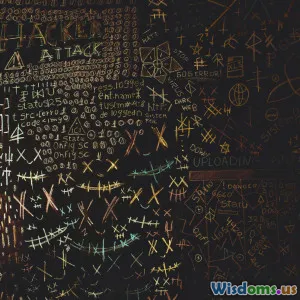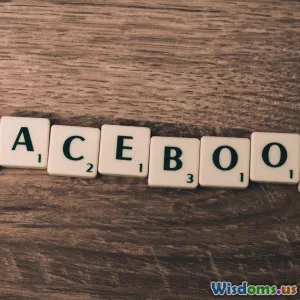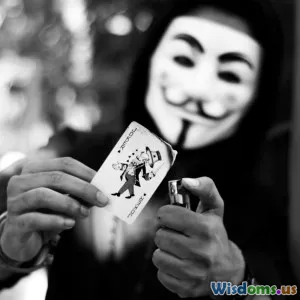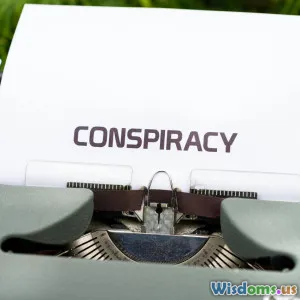
Unveiling the Truth Behind Modern Secret Organizations
8 min read Explore the realities of modern secret organizations—facts, myths, and their impact on society unveiled. (0 Reviews)
Unveiling the Truth Behind Modern Secret Organizations
In the shadowy corners of history and society, secret organizations have long captured the imagination. From clandestine brotherhoods to covert groups wielding significant influence, these entities challenge our understanding of governance, power, and secrecy. But what truth lies behind modern secret organizations in today's digitized and transparent age? Are these groups mere relics of the past or potent forces shaping global dynamics? This article aims to demystify contemporary secret organizations, offering nuanced insights into their realities, purposes, and relevance.
Introduction: Where Mystery Meets Modernity
Secret organizations have permeated pop culture — think of the Freemasons, Illuminati, or enigmatic societies portrayed in countless movies and novels. However, in the 21st century, the nature of secrecy has evolved drastically. The widespread access to information, social media's ubiquity, and international surveillance raise a critical question: Can modern secret organizations truly remain secret? Or have they adapted new methods of influence beyond the public eye?
Investigating these elusive groups calls for separating conspiratorial lore from substantiated fact. This article journeys into that exploration.
Defining Modern Secret Organizations
Secret organizations today can be defined as groups or institutions which operate under varying degrees of confidentiality regarding their membership, goals, or strategies. Unlike their historical predecessors, modern secret societies may not always rely strictly on handshakes or cryptic symbolism; instead, they often use encrypted communication, private networks, or wield influence through financial and political channels.
Examples and Types
-
Think Tanks & Policy Circles: While not secret per se, influential policy groups can serve as semi-closed forums where powerful individuals shape global policy discreetly. For example, the Bilderberg Group—hosting annual conferences with political leaders and industry titans—maintains a veil of privacy that fuels speculation about its influence.
-
Exclusive Financial Networks: Organizations such as the Bohemian Club concentrate on private memberships, including elite politicians and CEOs, convening annually in California. Their closed meetings have spurred rumors linking socializing with high-level economic and political strategizing.
-
Modern Fraternal Orders: The Freemasons continue to operate globally, adapting to transparency demands, but retain secretive rites and membership aspects, blending tradition with contemporary philanthropy.
-
Covert Intelligence Outfits: Intelligence agencies develop clandestine units, some of which—like the CIA's now well-documented historical operations—operate with secrecy to safeguard national security interests.
-
Private Social Clubs: Institutions like the Skull and Bones society at Yale University have longstanding legacies of influential membership and opaque ritualistic practices.
Mechanisms of Opacity in the Digital Age
In an era punctuated by data leaks and whistleblowers, how do secret organizations maintain confidentiality?
-
Encrypted Communications: Utilizing state-of-the-art encryption technologies protects sensitive discussions.
-
Controlled Membership: Rigorous vetting processes prevent infiltration and leaks.
-
Symbolic Language: Esoteric symbols and codes encode meaning accessible only to insiders.
-
Selective Transparency: Some organizations selectively disclose philanthropic initiatives or public activities to manage public perception without revealing core operations.
These mechanisms illustrate sophisticated adaptations embracing technology and psychology to safeguard secrecy.
Debunking Common Myths
Myth 1: All Secret Organizations Conspire for Global Domination
While some secret societies harbor ambitions influencing political or economic outcomes, the notion that a single, omnipotent group dictates world affairs oversimplifies complexities. For instance, numerous organizations prioritize social bonding, charitable causes, or intellectual discussion over conspiratorial agendas.
Myth 2: Secrecy Equals Malevolence
Secrecy can protect privacy, preserve traditions, or ensure safety rather than signify wrongdoing. For example, intelligence agencies must maintain secrecy to protect sources and operations that secure national interests.
Myth 3: Transparency is Always Optimal
Certain sensitive discussions, particularly regarding security or diplomacy, require discretion. Full transparency could undermine negotiation strategies or put lives at risk.
Real-World Insights and Contemporary Impact
Economic Influence
Secretive groups with powerful memberships can shape economic policies indirectly. For instance, exclusive summits enable private conversations resulting in coordinated actions affecting markets.
Political Clout
Historically, secret societies have influenced political movements and decisions. Modern counterparts often exert subtle pressure within formal political channels via networking and advocacy.
Social and Cultural Contributions
Fraternal organizations contribute significantly to charity, education, and cultural preservation, balancing their mystique with social good.
Challenges to Democracy and Accountability
The opacity inherent in such organizations poses questions about accountability, transparency, and equitable influence. Democratic societies continually wrestle with ensuring that informal power does not undermine public interest.
Conclusion: Seeking Balance Between Secrecy and Society
Modern secret organizations remain multifaceted entities — blending tradition, influence, and discretion. Complete demystification may be impossible, given the very nature of secrecy, but understanding their architectures and motives helps contextualize their place within global society. Recognizing both their positive contributions and potential risks prompts informed discourse on transparency, governance, and civic engagement.
Ultimately, vigilance and critical thought empower society not to fear these groups blindly but to hold power—visible or concealed—to account.
“Secrecy serves the ambitious more than it serves truth; yet some truths are shielded for the sake of peace.” — Adapted reflection
References
- Turner, D. (2018). Secret Societies and Their Role in History. Oxford University Press.
- Knight, P. (2020). Power and Secrecy in the Modern Age. Cambridge Historical Review.
- Official Bilderberg Meetings Website: www.bilderbergmeetings.org
- National Intelligence Council Reports, 2023
Embark on your own explorations into historical archives and credible sources to further unravel the intriguing world of secret organizations. Awareness and education are the best tools against misinformation.
Rate the Post
User Reviews
Popular Posts





















